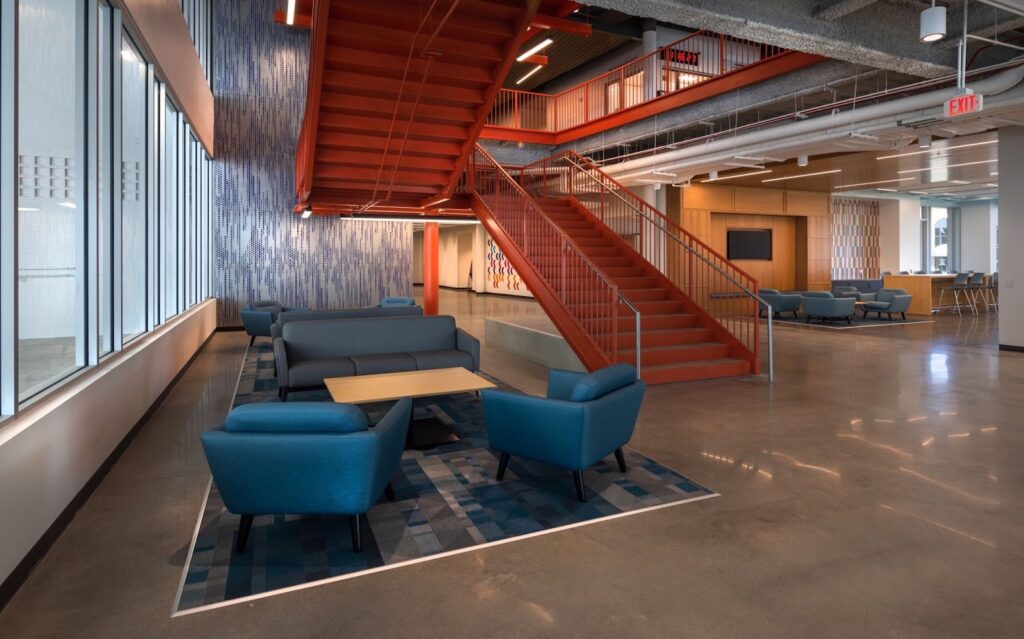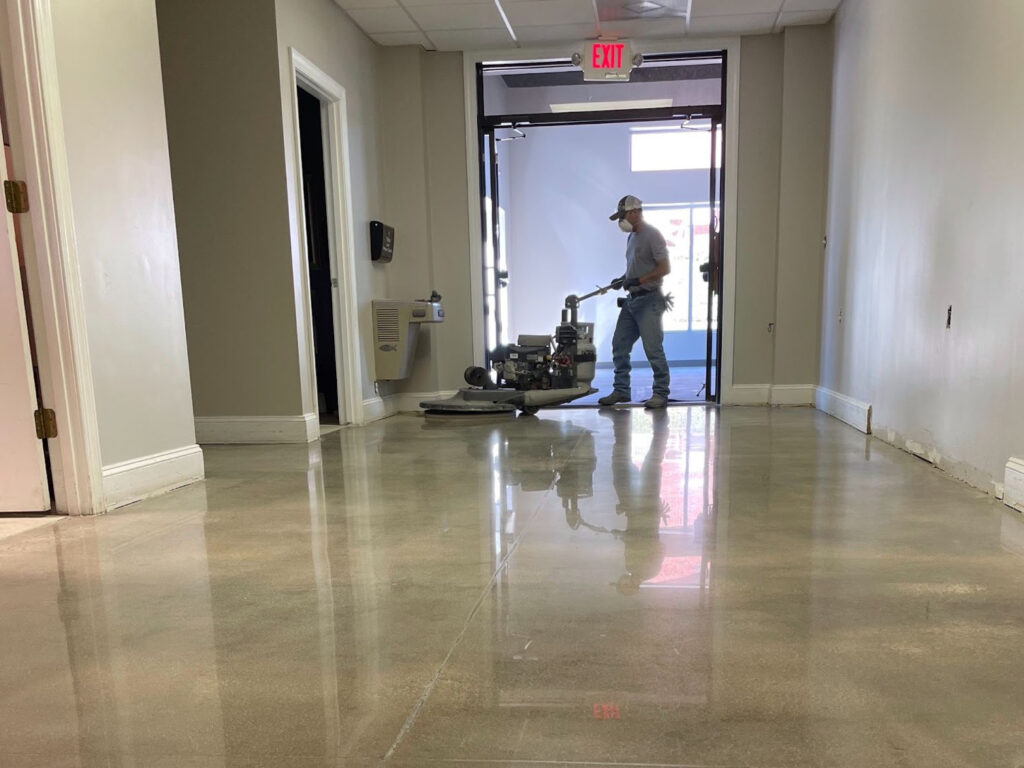Polished concrete is one of the most durable flooring options available. With minimal maintenance, these floors can maintain a gloss finish and prolonged service life.
Polished concrete is a popular option for residential, commercial, and industrial spaces. This affordable flooring option is beautiful, long-lasting, and easy to clean and maintain. While polished concrete floors are not maintenance-free, they generally are easier to care for than other types of decorative concrete floors since they do not make use of high build topical sealers or require a waxing regimen. Over time, polished concrete may become dull and lose the reflectivity it had when originally polished. Site-specific factors such as the amount and types of traffic, combined with the amount of dirt and contaminants, will determine the exact maintenance plan needed. Not only do polished concrete floors require basic maintenance by the property owner but periodic maintenance by a professional polished concrete floor specialist is recommended.
Maintaining polished concrete floors is similar to other hard surface floors. Soils and spills on the surface must be addressed, correct cleaning chemicals must be used, and personnel must be properly trained to maintain the floor to its original look. Once dirt and soil is swept up or vacuumed, polished concrete floors can generally be cleaned with clean water and a clean mop. They do not require abrasive cleaners or chemicals. If you feel the need to use a cleaner, citrus or neutral-pH cleaners should be chosen to avoid marring the finish. High-traffic areas that are prone to heel scuffs, spills, and other contaminants may require additional attention while daily sweeping and occasional mopping may be the primary requirements for low-traffic areas.

General Maintenance Recommendations for Commercial Settings:
Daily
Remove Surface Dirt
The main aspect of routine maintenance for polished concrete is the removal of dirt and debris. If left in place, the dirt can abrade the surface of the floors, causing them to lose their shine. Cleaning can be done with a soft, dry dust mop, an untreated microfiber dust mop, or a vacuum with a soft-bristled attachment. For larger areas, walk behind or ride on auto scrubbers are ideally suited for removing surface spills and debris.
Clean liquid spills and stains immediately.
Certain types of spills can result in stains to the polished concrete surface if allowed to remain on the floor for an extended period, especially if the spill contains any liquid that is acidic, caustic, or citric. These types of liquids can cause surface etching and staining and should be wiped us as soon as possible.
Use entry/walk-off mats
It’s best to place floor mats at all entrance points. With an entry mat in place, rainwater, which could be acidic (acid rain), and the amount of dirt that gets tracked onto polished concrete floors is greatly reduced. Entry mats must be maintained and kept clean to reduce dirt accumulation.
Weekly
Polished concrete floors can generally be cleaned with clean water and a clean mop. A neutral-pH cleaner can be used in high-traffic areas to clean spills and built-up soil. Cleaners that are acidic or too alkaline may dull the shine of the polished concrete floors. A commercial floor scrubber that is equipped with a clean, non-abrasive pad (typically white) could also be used to help remove dirt buildup and are great for getting spills cleaned-up quickly. The less time a spill is on the floor, the less chance of it leaving a stain. Do not use traditional floor waxes; they are not necessary and will create unnecessary maintenance.
Monthly/Quarterly
Buffing polished concrete floors using a high-speed propane burnisher fitted with a diamond impregnated pad will remove scratches and surface stains and maintain a high-gloss shine. High-traffic areas may need burnishing more often to maintain a high gloss. Remember to always clean the floors before burnishing. If there is dirt on the floor, burnishing will grind it in.

Annually/As Needed
To maintain polished concrete flooring’s ability to resist staining and bring back their original beauty, professional concrete flooring specialists would start the restoration process by using a water-based floor stripping agent to clean away dirt and debris. A stain guard product would then be reapplied to safeguard the finish and prevent dirt and other pollutants from penetrating the surface.
Depending on the amount of traffic, weather, and overall wear and tear, a professional concrete flooring specialist would be able to repair surface-level damage by repairing joints, cracks, and divots before applying a new coat of stain guard.
In situations in which the finish has been greatly stained or damaged, the concrete may need to be repolished, often dropping back to a hybrid transition diamond or 100-grit resin.
Conclusion
Polished concrete is an easy-to-maintain and attractive flooring type for many commercial applications and is becoming more popular across industries. Learning how to maintain a polished concrete floor is something that takes a little time and patience. A scheduled maintenance plan will ensure your polished concrete floors maintain the same top-quality, finished appearance for many years to come.